|
I've been doing some digital house cleaning, which is a surprisingly really fun process. I've uncovered quite a few past projects that I've decided to publish on this website, instead of letting them languish on a junk drive. The first of these rediscovered posts focuses on a project that occurred from 2010-2012. During this time, I had the good fortune to spend the majority of my summers conducting archaeological field work in historic gold mining claims just north of Fairbanks, Alaska. This work was part of my MS in Industrial Archaeology at Michigan Tech (you can find my thesis here). Rather than just presenting a photo essay of some of the mine sites we recorded, I thought it could be educational, and maybe fun, to show some snippets of how an industrial archaeologist records a complex standing stamp mill. Specifically, I hope this post breaks down the process of documenting a multi-story industrial facility, and next, how these data can be used to reconstruct how that technological system functioned. Prior to entering Michigan Tech's Industrial Archaeology program, and subsequently working in Fairbanks, I was gainfully employed as an archaeologist with the United States Forest Service - a life changing activity that I often look back on fondly. During this time I documented a variety of archaeological sites, ranging from pre-contact settlements in Arizona and New Mexico, to logging camps in Idaho's Clearwater National Forest, and railroading camps throughout California. I also encountered historic mining sites, first in Alaska's Chugach National Forest, but then others in places such as the Black Hills National Forest in South Dakota, the Lassen National Forest in California, and New Mexico's Gila National Forest. Although all of these mining sites were obviously different, when you encounter a lot of them you begin to understand how each of them are also very similar. All historic mining sites contain some arrangement of similar features. These can be physical remains, such as can dumps, broken equipment, or collapsed structures, as well as broader landscape features which are generally dominated by signs of prospecting, such as trenches, waste rock piles, and a ridiculous abundance of surface prospecting pits. These shallow holes represent attempts by miners in the past to understand the location, depth, and content of the ore body that they wished to extract. Although prospecting pits are fairly unremarkable in the field, after being recorded with a GPS unit and mapped across space, these features show the defined patterns of mineral exploration, reflecting the miner's remarkable understanding of geology as well as the human effort expended to retrieve value. "Another goddam prospecting pit!" A statement frequently uttered by archaeologists surveying mining landscapes Although I realize now I'm waxing poetic about the merits of prospecting pits, when you encounter hundreds of these within a single mining site, you can begin to realize how tedious some mining sites can be for an archaeologist. Each prospecting pit requires documentation, consisting of photographing, measuring, and recording its location in a GPS unit, processes that take up quite a lot of time. Taking this into account, the frustration voiced above by numerous nameless co-workers, and possibly myself, becomes readily apparent. Contrasting from the resentment often voiced regarding the sheer quantity of prospecting pits in an historic mine site, I've yet to hear an archaeologist complain about encountering a stamp mill. Stamp mills are industrial facilities used to disassemble ore. Using mechanical processes, entailing the sorting of ore by size, reducing the size of this ore in both jaw crushers and within stamp batteries, and finally classifying the crushed ore on apron tables, the stamp milling process essentially separates value from waste. This leads me to the Hi-Yu Stamp Mill in Fairbanks, the second milling facility I had the opportunity to record as an archaeologist, and by far the most well-preserved. Documenting a stamp mill is a daunting, and sometimes intimidating task. The basic purpose of an archaeological recording is to identify what artifacts exist at a site, to document their condition, and finally where they are located in space. Archaeological recording can occur both at the sub-meter scale, as well as at the broader landscape scale - often used when documenting mine sites due to their vast size. When still standing, stamp mills are cavernous facilities, consisting of multiple rooms filled with various machines, structural debris, and other ephemera - all in different stages of duress. Making matters more complicated, stamp mills are usually multi-story facilities, and accessing some of the upper reaches can be both challenging and dangerous. These upper reaches are where ore first enters the stamp mill and where the technological system of ore processing, or reduction, begins. As industrial archaeologists, the goal my co-workers and I had in documenting the Hi-Yu Stamp Mill included questions related to basic questions such as, what artifacts still exist in the facility and where they were located - but we also wanted to know how the facility had functioned historically. To answer this latter question, we needed to understand the role that these these pieces of machinery played in the milling process, and how they articulated with one another - in doing so, we can begin to understand the technological system employed in the stamp mill itself. During my time in Fairbanks I had the opportunity to work alongside my colleague, fellow industrial archaeologist Paul White. Paul is an associate professor at the University of Alaska Anchorage, and also a talented artist - skilled at producing axonometric drawings of historic ore processing facilities (you can buy his new book here). Axonometric reconstructions are three-dimensional renderings commonly used in engineering to depict all sides of an object from an angle (see above). In order to produce these axonometric drawings, you need to record not just the length and width of an object, but also its depth or height - essentially the X,Y, and Z. These measurements are then drawn on axonometric graph paper (see above). We wanted to take this idea, but apply it to the entire Hi-Yu stamp mill - that is measure all of the equipment within the facility, along with its rooms, walls, and staircases, in order to reconstruct what the Hi-Yu might have looked like years ago. To understand the technological process employed at this stamp mill, I will take you through the steps (or the flow sheet) that the ore traveled as it was reduced in size, and disassembled into value and waste. The first step in ore processing is getting the material to the stamp mill itself. In the above image you can see the slightly dilapidated trestle that was used to bring ore into the stamp mill. This ore was stored in an adjacent ore bin, and would have traveled by rail over the trestle and then dumped into the stamp mill. A general rule in stamp milling, is that the first step almost always occurs at the top level of the facility. Doing so, provided the mill workers with the use of a free source of energy - gravity - to help move the ore through the facility. When ore entered the stamp mill it immediately fell onto a simple technology known as a grizzly (pictured above). The grizzly was the first technology used in the ore dressing process. Consisting of only a simple series of bars, the grizzly allows chunks of ore below a certain size to fall directly into the stamp batteries below, while larger chunks of rock are picked off the grizzly by hand, and tossed into an adjacent jaw crusher. The material picked off of the grizzly was deemed too large to be sent directly to stamp batteries, and needed to be reduced in size by a jaw crusher. A jaw crusher functioned somewhat like a motorized and inverted Pac-Man, crushing the large chunks of ore until they were reduced to a size small enough to enter the stamp battery's ore shoot located under the jaw crusher (check out the cool GIF below). The Hi-Yu stamp mill contains two, five-head stamp batteries, which are adjoined by a cam shaft that was used to operate these devices (first by steam power, later by a large diesel engine - visible in the second video below). Located at the top of these batteries is the cam level - basically the mechanism which raises and drops the stamps onto the ore. These cams are attached to the drive or cam shaft (a long horizontal bar), which, as it rotates, forces the cams to articulate with a tappet attached to each of the stamp stems. As the 's' shaped cams come into contact with the flat bottomed tappers, the stamp stems are lifted a little less than a foot. At this moment the rotating cam disarticulates with the tappet and drops the stem, which sends the attached stamp shoe slamming into the ore found in the mortar box. These cams and tappets are pictured below. Included in this post are two YouTube videos - the one below shows a brief snippet (10 seconds) of the stamp room floor - this video has some clearer images of the stamp batteries. Affixed behind the stamp batteries and above the mortar box is a geared apparatus running at an incline towards the stamp battery. This apparatus, an ore feeder, is a device that allows ore to enter the mortar box in intervals. Prior to the development of the automated ore feeder, a worker was responsible for feeding chunks of ore into the stamp battery directly. This human-fed stamp mill was under constant duress from the irregular feeding of the worker; the battery was either overfilled or neglected, causing the heads to smash against too much ore, or against the exposed die, bending the stems and creating periods of inoperability. The Hendy Challenge ore feeder helped alleviate this problem. A lever on the Challenge ore feeder was attached to a stem of the stamp battery, and as the stem rose it engaged the lever, which raised a gate allowing for a measured amount of ore to fall into the stamp mortar.  My notes showing the size and location of individual components for the above drawing of the ore feeder - you can quickly see how these can become convoluted My notes showing the size and location of individual components for the above drawing of the ore feeder - you can quickly see how these can become convoluted 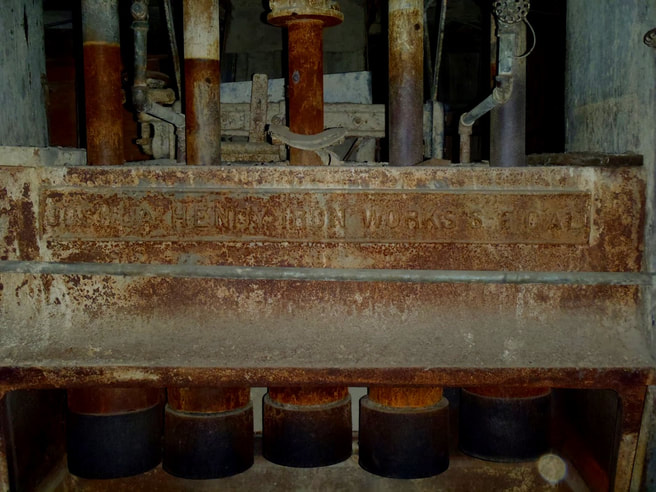 A close-up of the Joshua Hendy mortar box, the five stems of the stamp battery, and the stamp shoes within the mortar box itself. Capturing detail on old machinery is quite difficult with a camera, especially when the lighting conditions are not perfect. Measured drawings can help illustrate some of the details that photography might fail to capture. Each of the stamp batteries in the Hi-Yu were equipped with mortar boxes made by the Joshua Hendy Iron Works of San Francisco. Within these cast iron boxes is where the heavy crushing occurred. As these stems were dropped the attached stamp heads would crush the ore that was fed into the mortar box using a unique pattern decided upon by the mill foreman. In the front of these boxes there originally would have been a perforated screen, which would have allowed the finely reduced ore to pass through and travel onto the attached apron table. The stamping floor is somewhat the tail-end of the ore dressing process - this is where the finely crushed ore is finally classified or sorted across apron tables. These apron tables would have been covered with a canvas sheet doused in mercury, and a series of small planks or cleats to help trap the heavier valuable material as it washed down the table. In the Hi-Yu mine the apron tables were at varying stages of distress. However, both were still affixed to the stamp batteries, and we were able to ascertain the location of their footings and approximate incline that the tables were set at. The video below was my attempt to create a sort of public outreach project showing the process of recording this facility. I'm not sure if the time-lapse serves any beneficial purpose. My initial thought was that this could portray how archaeologists move through a building when they are documenting it - basically showing the recording process. In the video, you will see Paul White and myself spending a Saturday within the confines of the Hi-Yu. The first half of the video is the recording of the apron tables and some of the stamp batteries, while the second half features the engine room - which I decided not to describe at length in this post. If nothing else, the soundtrack is by Mogwai. When all of these measurements were completed, Paul along with one of his students, John Hemmeter, completed the axonometric reconstruction below (Paul has included a new drawing on his website linked above). The following images represents hours of field measurements, paper and pen drawings, scanning and retracing in Adobe Illustrator, and then digitally assembling.  The finished axonometric projection of the Hi-Yu stamp mill. Each piece of machinery was first drawn by hand and then digitized to create this reconstruction. (Drawn by John Hemmeter and Paul White) The finished axonometric projection of the Hi-Yu stamp mill. Each piece of machinery was first drawn by hand and then digitized to create this reconstruction. (Drawn by John Hemmeter and Paul White) This was a fun project to re-engage with and I hope this post provided some detail into the process of recording a complex industrial facility, and might inform others of the process involved in recording an industrial site - a skill that I have been fortunate enough to learn from some of the best in the field. My co-workers and I spent hours within the Hi-Yu stamp mill, meticulously documenting this facility that hadn't operated since the 1940s, and it was great.
I know I am not alone in having gigabytes of cool research projects collecting digital dust on an old hard drive. I hope this post was informative, and maybe it will inspire you to revisit and publicize something that you worked on in the past.
6 Comments
Rob K
12/2/2018 11:22:03
Saw the YouTube video. What was the hole in the floor of the boiler room?
Reply
John
12/3/2018 06:48:38
Hi Rob,
Reply
Robert Alford
10/27/2021 15:48:59
Great job!! Love the old mining artifacts.
Reply
Joshua A Fritz
6/26/2022 14:17:47
Hi Yu is under the ownership of freegold llc the stamp mill is coming out.
Reply
12/11/2023 21:34:07
Stamp mill is coming out? Please explain? Have you looked at the one in ester, I believe the Hudson Mill?
Reply
Leave a Reply. |
AuthorJohn Baeten is a Postdoctoral Fellow in Spatial Analysis of Environmental Change in the Department of Geography at Indiana University. He holds a PhD in Industrial Heritage and Archaeology from Michigan Technological University. His research aims to connect historical process to current environmental challenges, and to contextualize the environmental legacies of industrialization as meaningful cultural heritage. Archives
September 2018
|


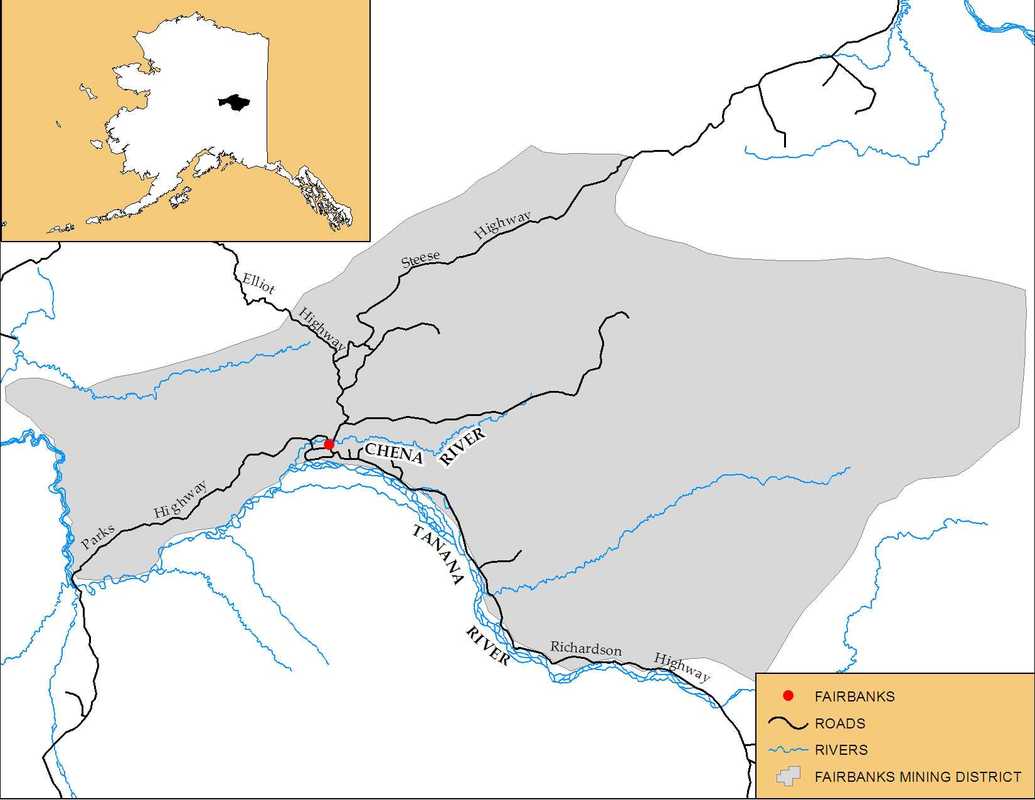






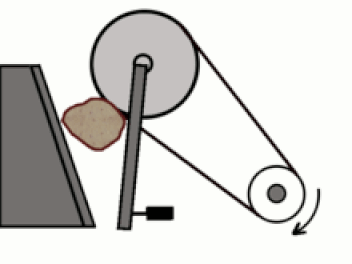



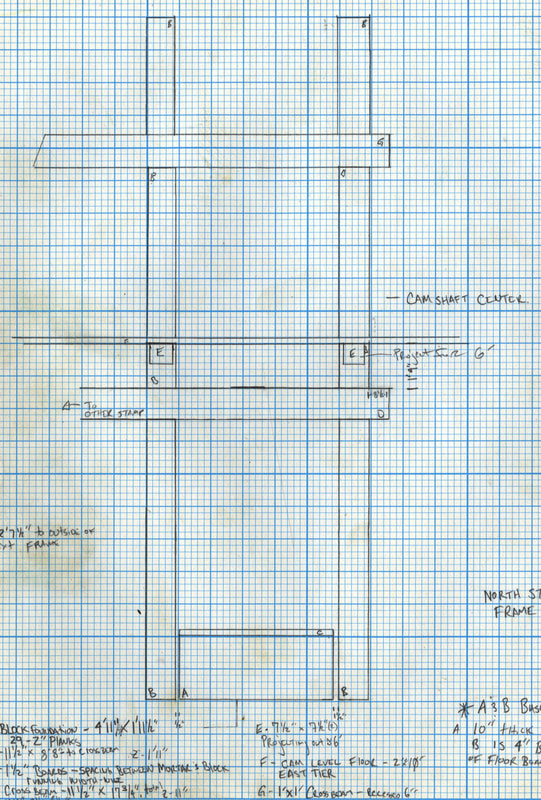




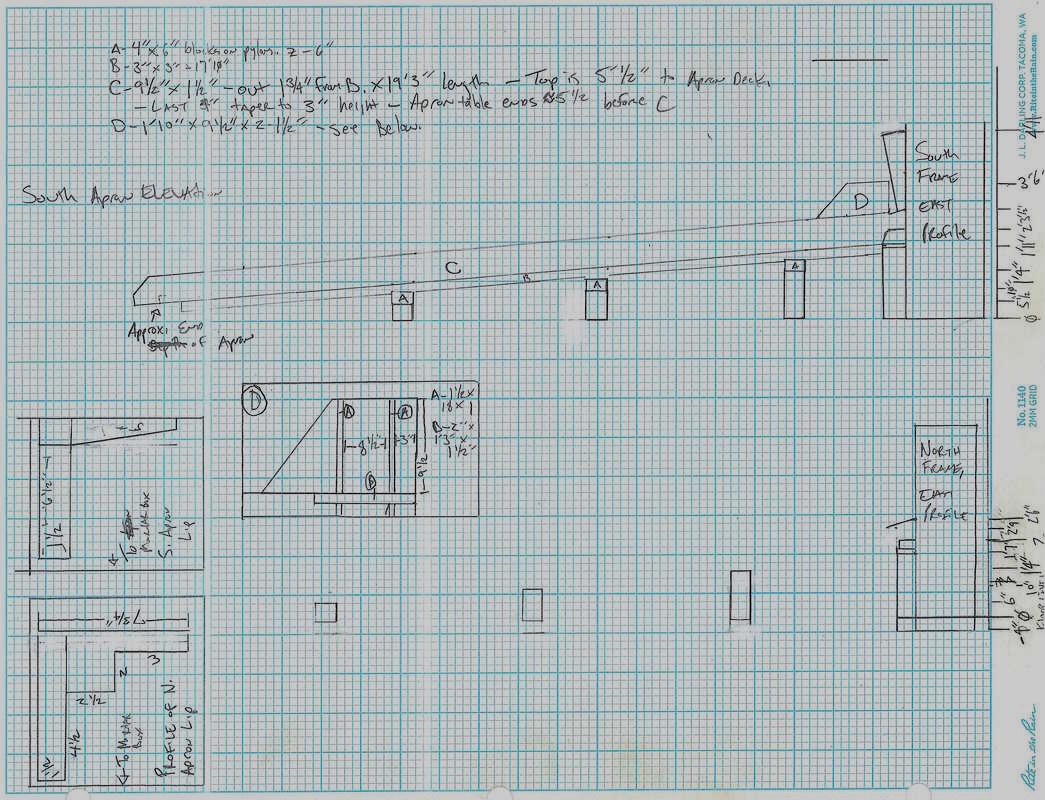


 RSS Feed
RSS Feed
